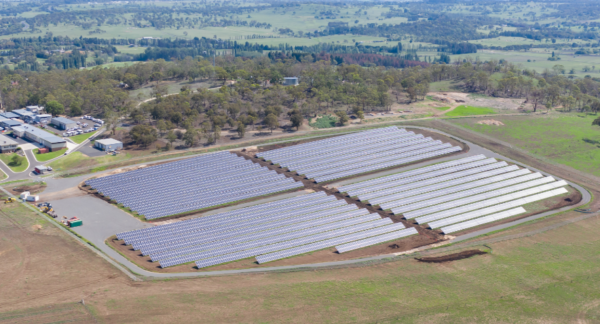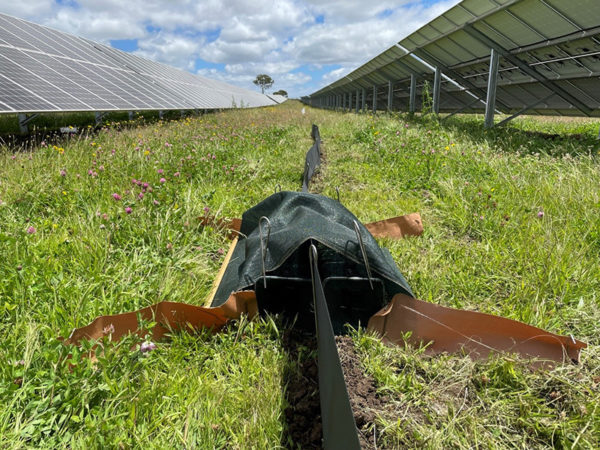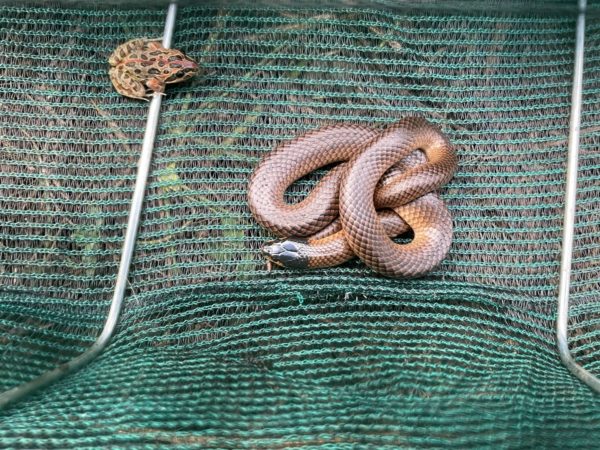Back in 2020 The University of New England (UNE) switched on its very own 3.2MW solar farm with the help of Solgen Energy Group and Aurecon. With an annual generation of approximately 5.2GWh, it is capable of supplying up to 50% of the campus’s energy needs, and much more when the planned energy storage component is added.
In the meantime, the on-campus solar farm is proving useful in more ways than one. Indeed, UNE lecturer in zoology and ecology Eric Nordberg is utilising the PV plant to ask a very important question, namely, what is the impact of large-scale solar farms on biodiversity?
Nordberg is conducting a pilot study into this question, specifically looking to learn how renewable energy zones (REZs), can have symbiotic benefits for wildlife as habitats.
“We know that land-sharing can work” said Nordberg, referring to AgriPV projects, “there are plenty of studies that show the coexistence of biodiversity on grazing landscapes or even crop production under solar panels, however, there are currently no data to show how we can improve these zones to cater for the native wildlife.”
With his students, Nordberg is surveying the various wildlife found in the UNE solar farm and comparing that with the adjacent fields. This will not only highlight which species are utilising the solar farm as a valuable habitat, but also which species aren’t. The latter data could help promote land management strategies in large-scale solar farm construction that would ensure the preservation of particular habitats.

Image: The University of New England
“For example,” said Nordberg, “new data could show us the need for simple changes such as adding rock piles to encourage rock-dwelling species and increase the amount of cover in solar farms. I’m also interested in looking at ways to improve vegetation management under solar panels, which will have trickle-down effects on wildlife.”
Nordberg and his students have installed a temporary 30m drift fence trap line in the UNE solar farm, which is, in effect, a long trap interspaced with pitfall buckets dug into the ground. Wildlife funnels in and finds itself trapped in one of the buckets for Nordberg to catalog before release.

Image: E. Nordberg / University of New England
Some examples of wildlife already found in and amongst the UNE solar farm include a spotted marsh frog and a Dwyer’s snake.

Image: E. Nordberg / University of New England
“Any large-scale land disturbance will have impacts on biodiversity” Nordberg continued, “and we should invest resources to mitigate any negative effects.”
“Solar farms are not really new – there are already thousands of them spread around the world – however, they have slipped between the cracks in terms of ecological monitoring. I think we have a great opportunity to lead this research and put UNE on the map, paving the way in landscape management of renewable energies.”
Beyond the UNE solar farm, which is proving its value as a teaching tool as much as an independent renewable source of energy, Nordberg wants to expand his research to larger PV plants in the New England Tablelands, as well as facilities in different climates to understand if and how biodiversity’s response to PV plants change.
“It’s a bit hard to say at this early stage,” said Nordberg, “but ideally, I would love to monitor the progress of recolonisation of wildlife back onto solar farm land over the course of five or more years.”
“To date, we don’t know how long (or if at all) plants and animals will naturally re-establish onto solar farms without introductions by humans. I suspect that many species will find their way back in, but those are some of the questions I’m interested to find out – what species recolonise and how long does it take?”
This content is protected by copyright and may not be reused. If you want to cooperate with us and would like to reuse some of our content, please contact: editors@pv-magazine.com.









By submitting this form you agree to pv magazine using your data for the purposes of publishing your comment.
Your personal data will only be disclosed or otherwise transmitted to third parties for the purposes of spam filtering or if this is necessary for technical maintenance of the website. Any other transfer to third parties will not take place unless this is justified on the basis of applicable data protection regulations or if pv magazine is legally obliged to do so.
You may revoke this consent at any time with effect for the future, in which case your personal data will be deleted immediately. Otherwise, your data will be deleted if pv magazine has processed your request or the purpose of data storage is fulfilled.
Further information on data privacy can be found in our Data Protection Policy.